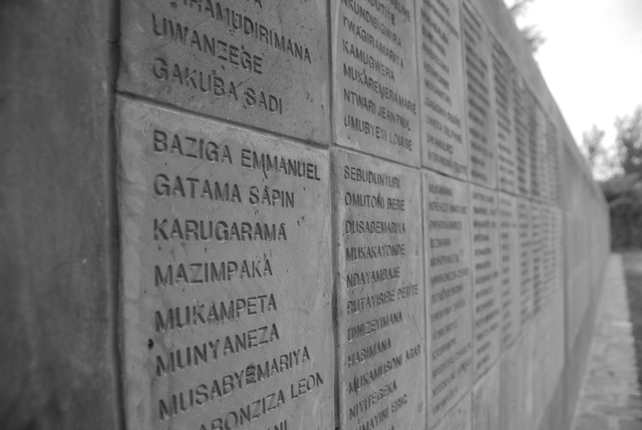
|
The Ntarama site is located in Eastern Province. Click on the image for a slideshow of photographs. All photographs © 2002-2008 Jens Meierhenrich. |

|
The Ntarama site is located in Eastern Province. Click on the image for a slideshow of photographs. All photographs © 2002-2008 Jens Meierhenrich. |
Not only memory changes, but sites of memory as well. Ntarama, in the Bugesera region, a half-hour’s drive from Kigali, is a case in point.
Of all of Rwanda’s genocide memorials, this former church is perhaps the one most frequently visited by foreigners and dignitaries (of late overtaken by the Kigali Memorial Centre). If we believe a 2002 report issued by Rwanda’s Ministry of Local Government, eleven per cent of the country’s genocide victims were killed in churches, which makes a visit to Ntarama for many doubly disconcerting. For it remains hard to reconcile in Rwanda the religious fiction of the church as a safe haven with the secular fact of its role in 1994 as a harbinger of death.
The popular Ntarama site has undergone substantial architectural and curatorial (to the extent that one can at all speak of a curator’s input) changes in the fifteen years since the country’s genocide of the Tutsi minority came to an end in 1994. Consider the images displayed here from the late 1990s, 2002, and 2008, respectively. The seeming disorder of the genocide has been gradually supplanted by one order of memory. Where once there laid piles of clothing and debris and Bibles thrown about, now a broom-swept floor is filled with shelving for skulls and femur bones; ceiling hooks for spoiled, blood-stained clothing; and trunks for books and pamphlets of the genocidal dead. What is more, where once the elements beat up on the demolished church during two annual rainy seasons, now imposing British-funded steel structures hover over the complex’s remains, structural and otherwise.
What difference, if any, the transformation of memory’s space makes for the transformation of memory itself is anyone’s guess.
Copyright © 2010 Jens Meierhenrich. All rights reserved.